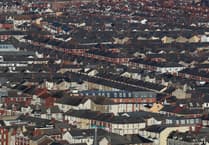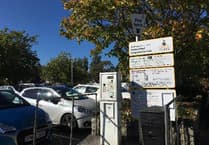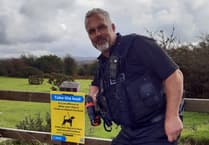In the film, The Ballad of Cable Hogue, Stella Stevens and Jason Robards sang a song that includes the lines, Butterfly mornings and wild flower afternoons. On a sunny day last week that is what I experienced, as I walked down through Hepwell Farm and then through Muddy Lane and saw lots of butterflies in the lane and on the road back up to Treweese Cross up to Venn Hill, down to Parsons Pool and then home.
Lots of gatekeepers were on the wing and I noticed that when two of them meet whilst flying beside the hedgerow there is always a tussle, what you could call aerial combat, as they sort out who the particular length of hedge belongs to. Basically, they have smoky brown wings with large patches of orange and a brown eyespot on the fore wings.
A couple of meadow browns were flitting along the lane near Venn Hill. These are common and widespread butterflies as are speckled woods that although their name suggests they inhabit woodland they can be seen on field and roadside hedges.
I saw three ringlets that are a darkish brown with a wingspan of about 46mm and show five ‘false eyes’ on the underside of their wings when they are resting or feeding. These eyes confuse birds as to the position of the butterfly’s body and so prevent attacks.
The bright colours of a red admiral made me hurry into a gateway where it had settled on some stones. This butterfly earned the 18th-century name of admirable; from which its modern name evolved, as its wings resembled the livery colours of a nobleman. They sometimes manage to survive our winters if they find a warm place to hibernate, usually in the roof of a building.
A cousin of the red admiral is the painted lady and I found one that was also resting on the ground. These butterflies come across the English Channel from southern Europe and North Africa during May and June but cannot survive the winter here. They lay eggs in this country that produce a second generation during September and October.
I spotted a comma butterfly feeding on some hemp agrimony flowers that stayed still whilst I took its photo. The only British butterfly with wings that give the appearance of ragged edges and on the underside there is a distinct white ‘comma’ mark. They will survive the winter months by hibernating in hollow trees.
One small skipper was seen on my morning walk. These butterflies settle with their wings half folded and have large black eyes with orange-brown antennae. Oddly enough, I saw this one on the same stretch of road, near Parsons Pool where I photographed a large skipper last year. Something I put down to the abundance of thistles and daisies along the hedge and bank-side.
I saw one moth on the walk, a magpie, which is just like the bird of the same name with wings of black and white with some yellow markings. This is a day-flying moth but when you see one it is usually content to sit there giving you plenty of time to observe it.
All photos and words by Ray Roberts




